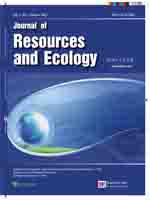A comprehensive precipitation trend and periodic analysis at the seasonal scale on a 286–year data series (1724–2009) for Beijing are presented using linear regression, 11-year moving averages, Mann-Kendall test and continuous Morlet wavelet analysis. We found that in the past 300 years precipitation has increased except during winter. There were strong increasing trends after the 1780s in both summer and annual precipitation data series and the trend was significant for a longterm period. The abrupt points of summer and annual data series of precipitation are 1764 and 1768 respectively, after that, the trend changed from decreasing to increasing. It shows different periodic traits in four seasons respectively: 30–170 years, 80–95 years, 75–95 years and 55–65 years are considered to be the strongest period in spring, summer, autumn and winter. One hundred and fifty-three years, 85 years, 83 years and 59 years are the first order main periods in spring, summer, autumn and winter, respectively. The trend and period of annual precipitation are mainly impacted by rainfall in summe. According to the first main period of 85 years in both summer and annual precipitation data series, Beijing will experience a time period of less precipitation in 2009–2030.
How to translate text using browser tools
1 March 2012
Long-Term Trend Analysis of Seasonal Precipitation for Beijing, China
Li Miao,
Xia Jun,
Meng Dejuan
ACCESS THE FULL ARTICLE

Journal of Resources and Ecology
Vol. 3 • No. 1
March 2012
Vol. 3 • No. 1
March 2012
Beijing area
long-term precipitation
Mann-Kendall test
trend test
wavelet analysis




